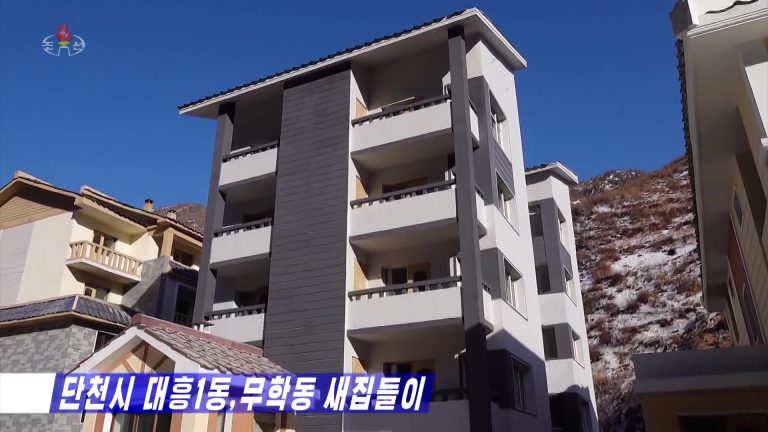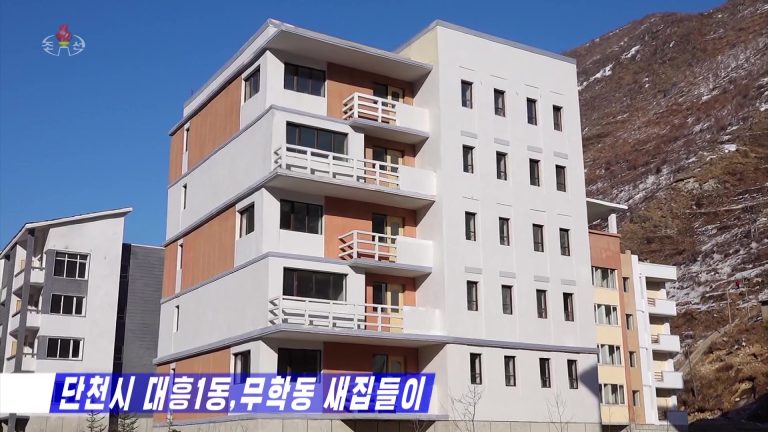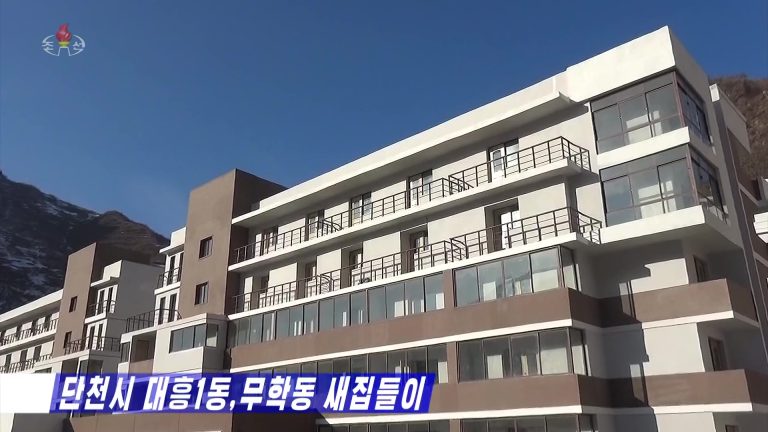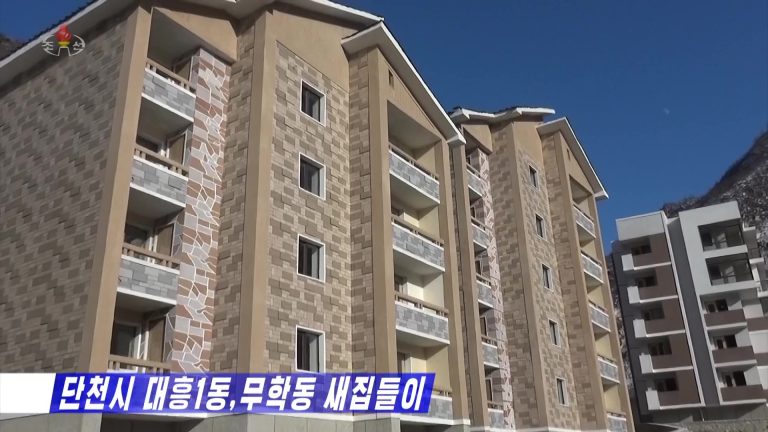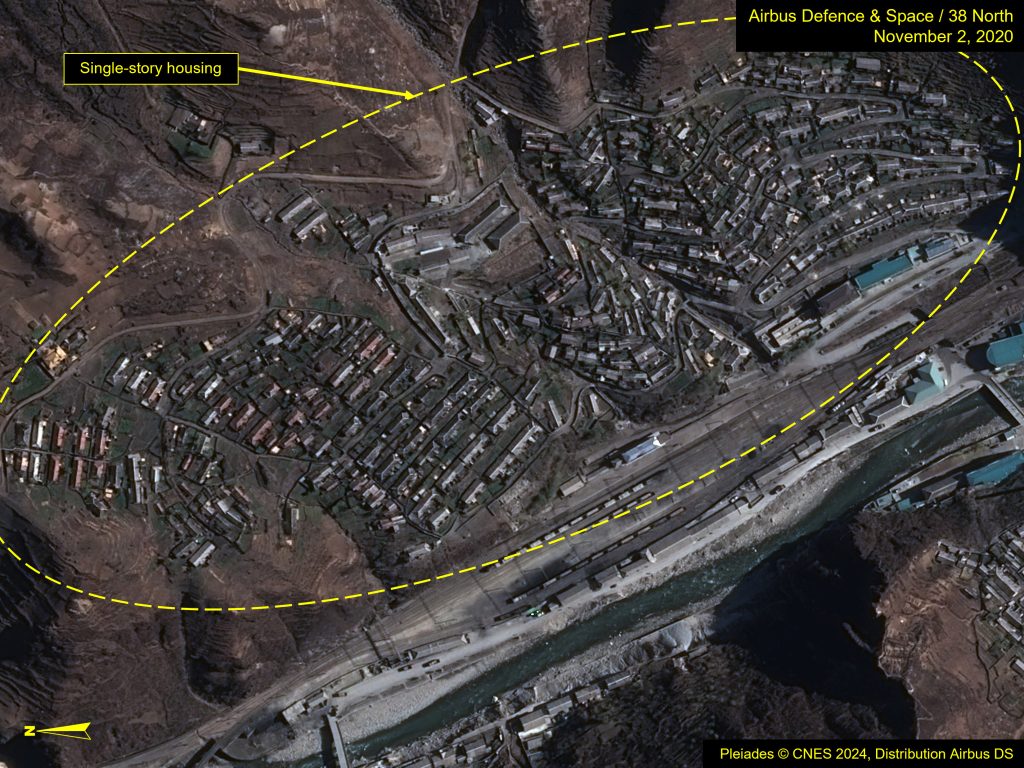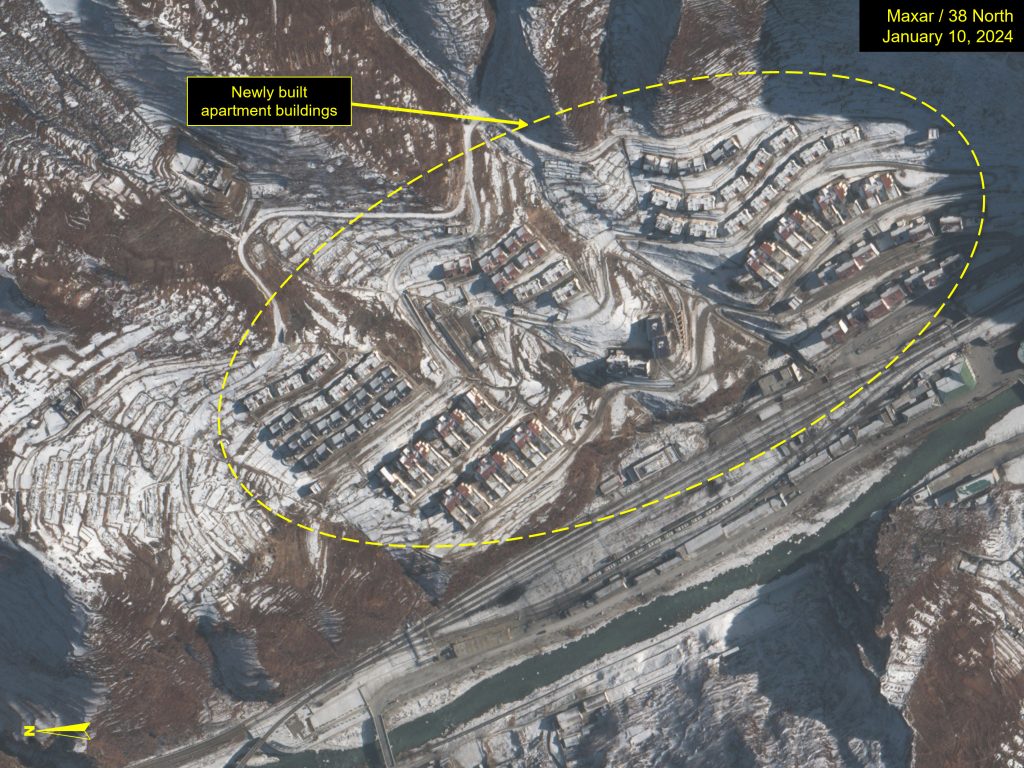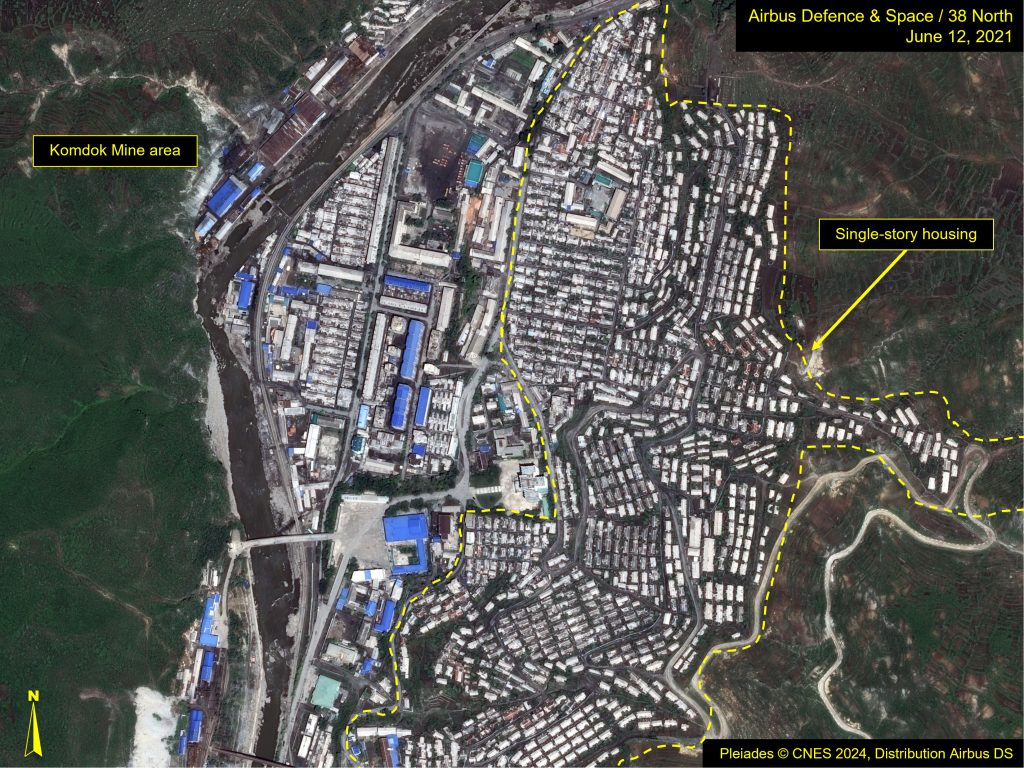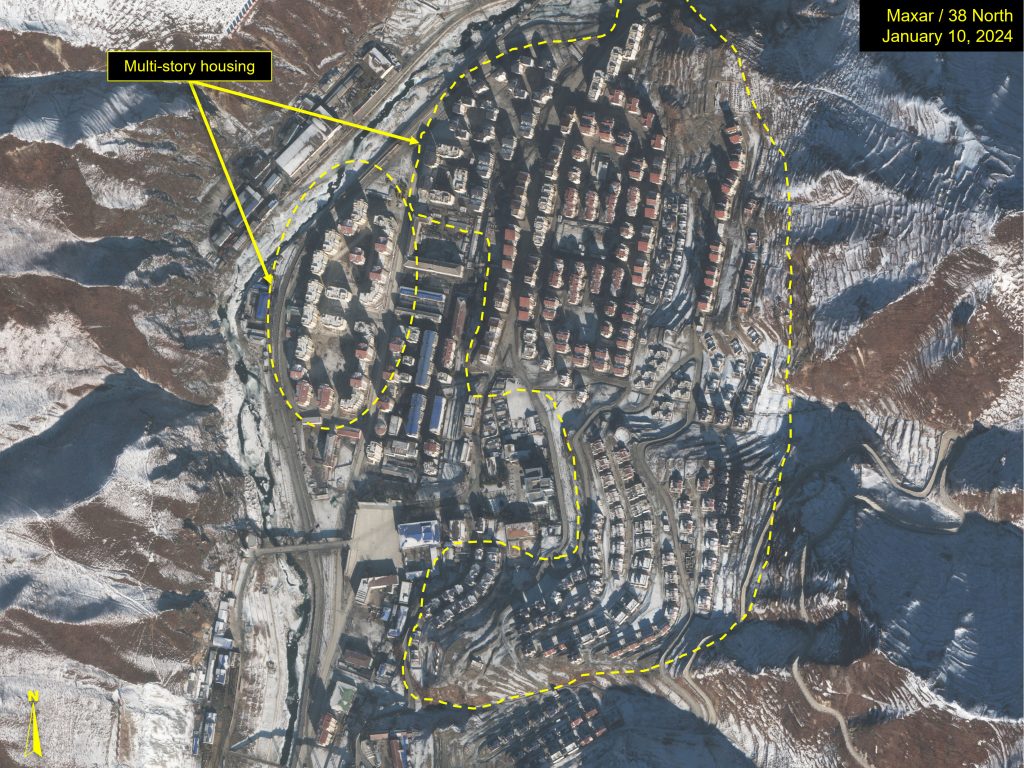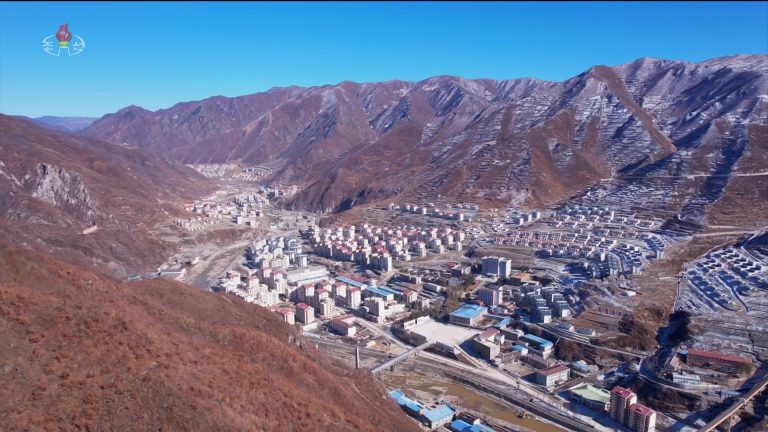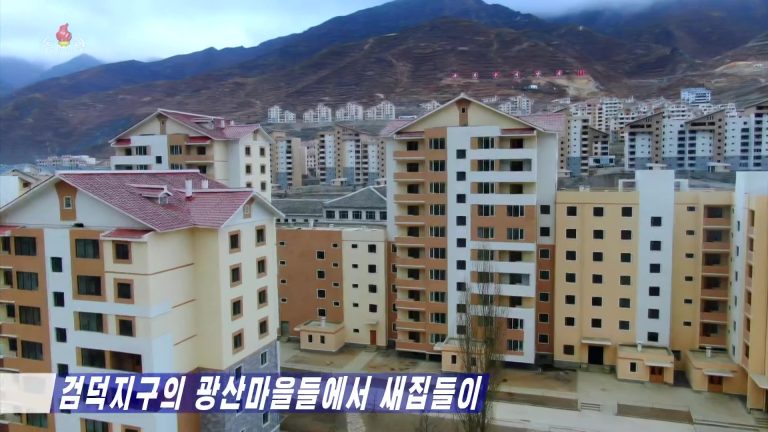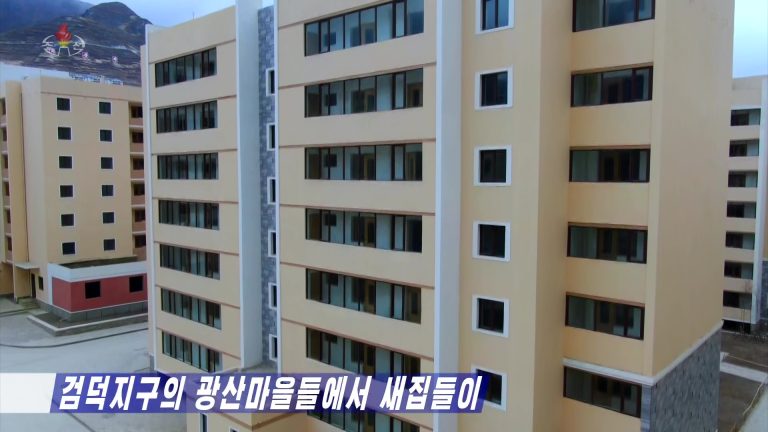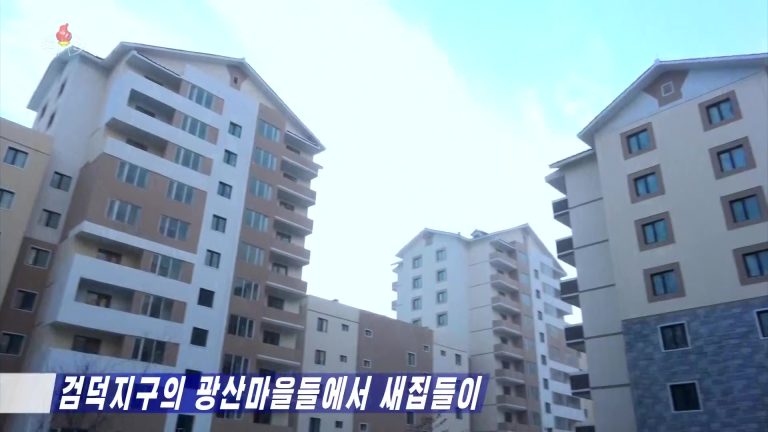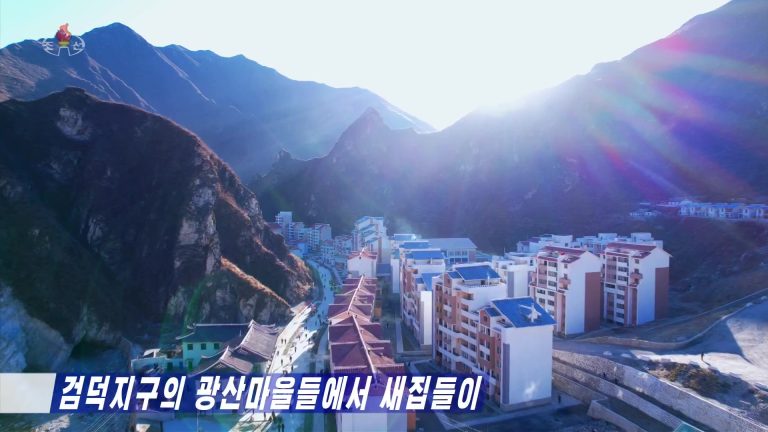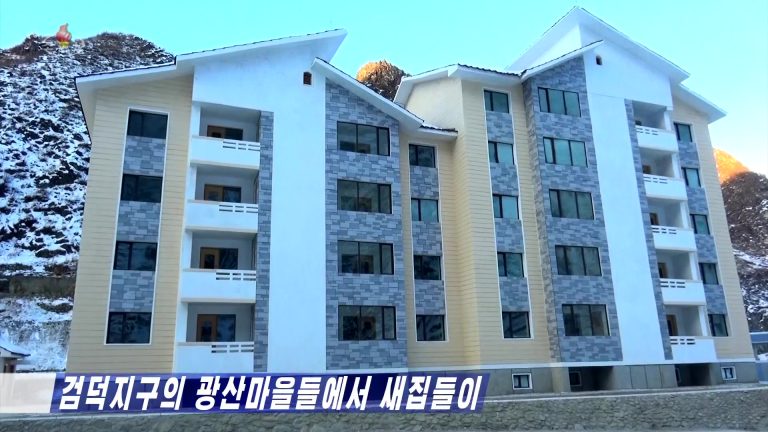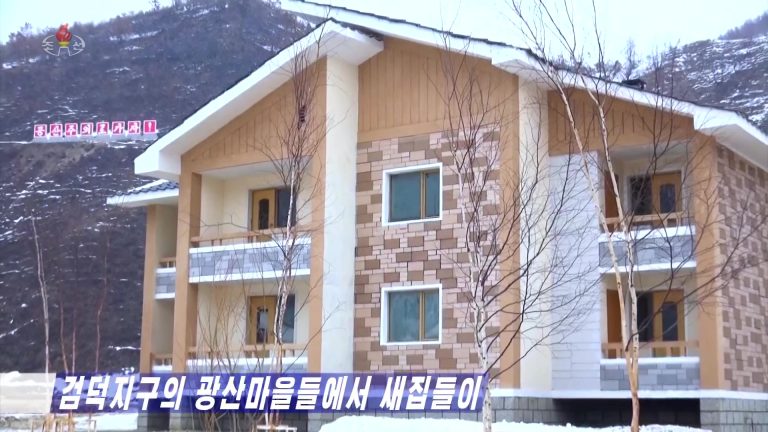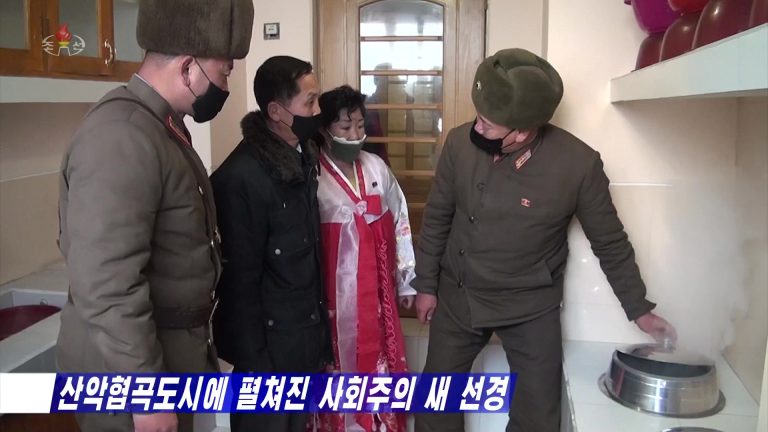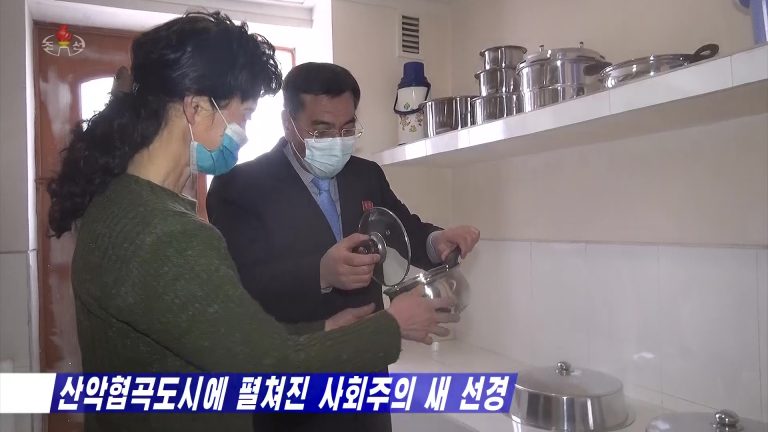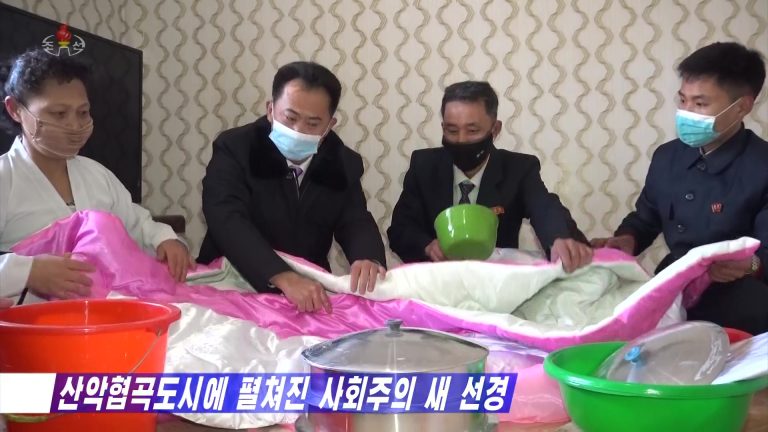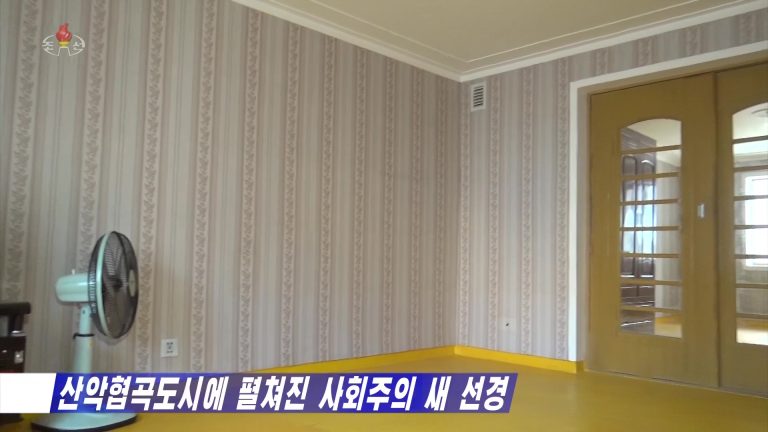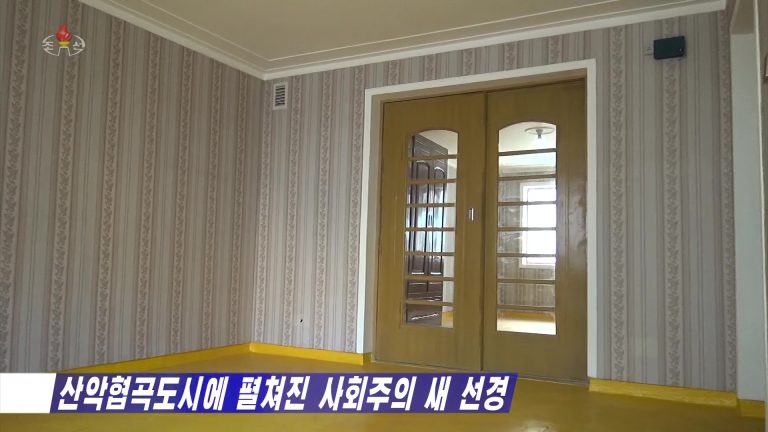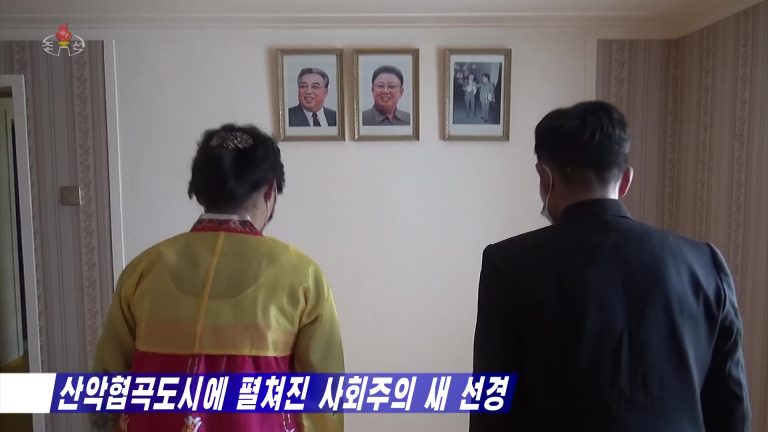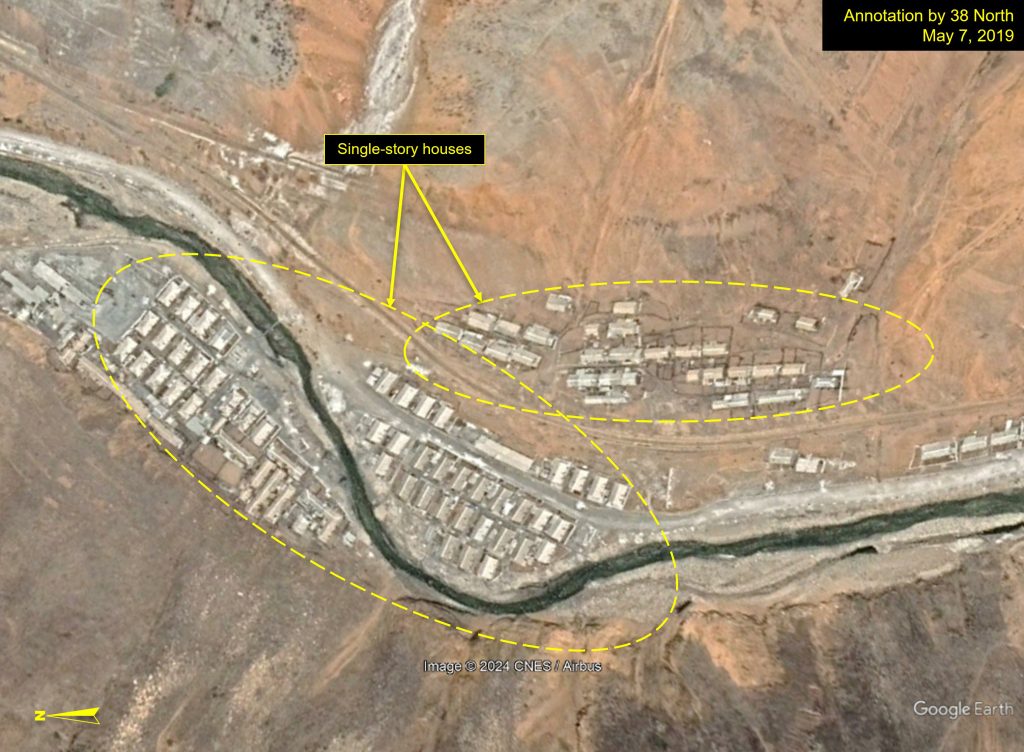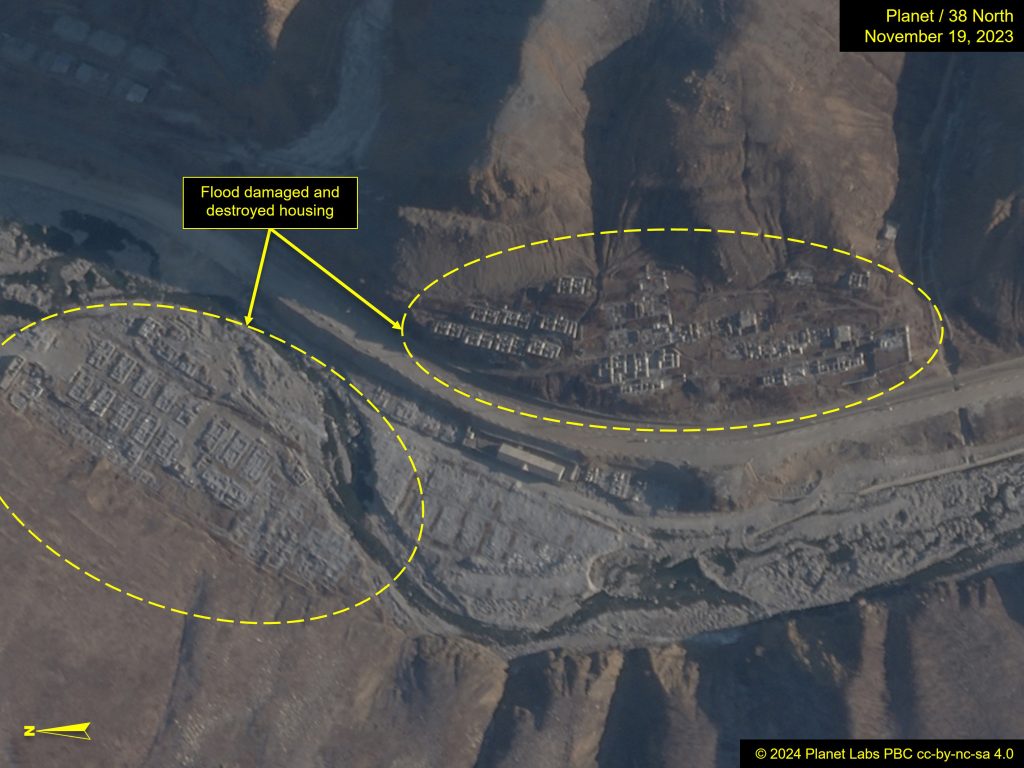Komdok’s Massive Housing Project Appears Ahead of Schedule
Kim Jong Un’s plan to remake the Komdok region into a “model” community is entering its final stretch. Over the last three years, hundreds of apartment buildings have been built across the area, transforming the towns and villages that house workers into modern communities.
Figure 1. Overview of Komdok Mining area.
Where single-story homes were once situated, multi-story apartment buildings now stand, designed to modern North Korean architecture standards that are more commonly found in Pyongyang than deep in the countryside.
The original plan called for 5,000 homes to be built over each year of the plan, but with just over three years later, North Korean media says 20,000 homes have already been built, putting the plan about a year ahead of schedule.
The new buildings look impressive in TV images, but questions remain about both their quality and how well insulated they are against the kinds of typhoon rains and landslides that have caused problems in the region before. In fact, it was the destruction of hundreds of homes by Typhoon Maysak in 2020 that triggered this initiative. While the new buildings are larger, they have been built on the same steep slopes and along the same river that once overflowed. Any improvements to drainage and flood management are yet untested.
Komdok Mining Region
The Komdok mining region sits in the center of the Tanchon region in South Hamgyong Province and is made up of three distinct areas. At the north is the Taehung Youth Hero Mine; in the center are the Komdok and Ryongyang Mines; and at the southern end is the Tonsan Mine area. There are a number of smaller branch mines in each area.
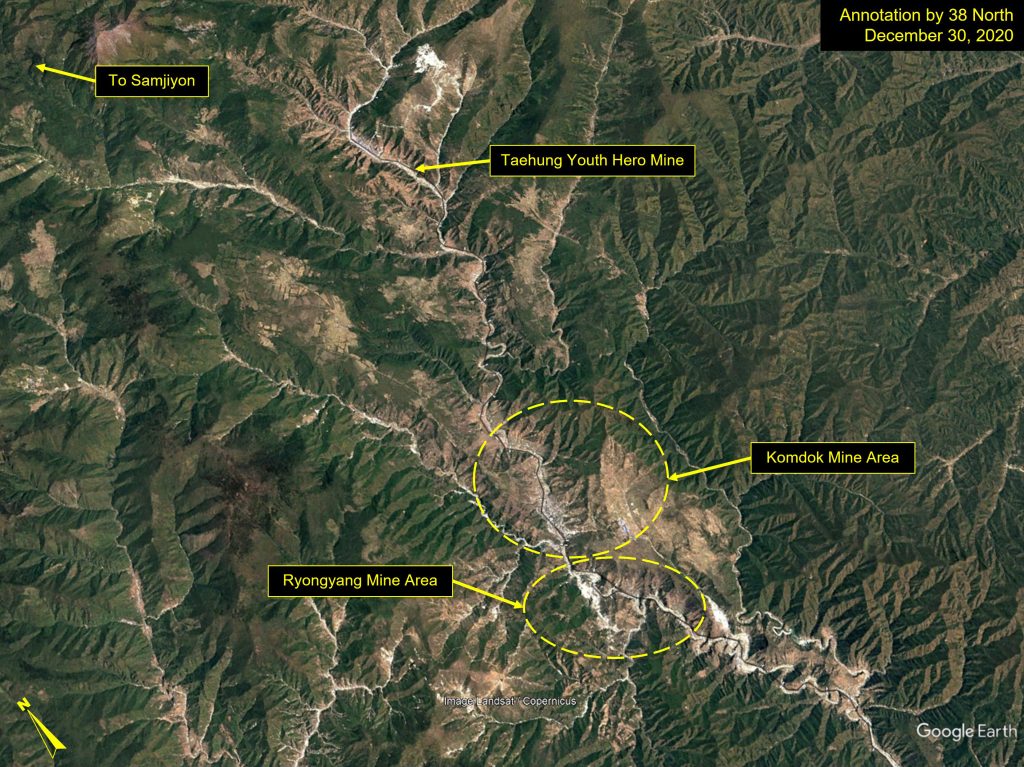
The area is about 100 kilometers (km) southeast of the Samjiyon region and is an ore-rich part of the country. The mines in this area include zinc and magnesite. Of particular note is the Kumgol Mine in the central Komdok region, which is believed to be the largest zinc mine in East Asia.
Komdok Timeline
|
The Five-year Construction Plan
The redevelopment of the Komdok region began as an 80-day campaign following the area’s devastation by Typhoon Maysak in September 2020. The typhoon swept away around 2,000 houses, 60 km of roads, 59 bridges and a kilometer of railway line, prompting an immediate plan to repair and rebuild what was lost. However, a much grander plan was in store.
In October 2020, about a month after the typhoon, Kim Jong Un visited Komdok to inspect the reconstruction effort and pledged to build 25,000 houses in the region as part of the five-year plan to be presented at the Eighth Party Congress in early 2021.
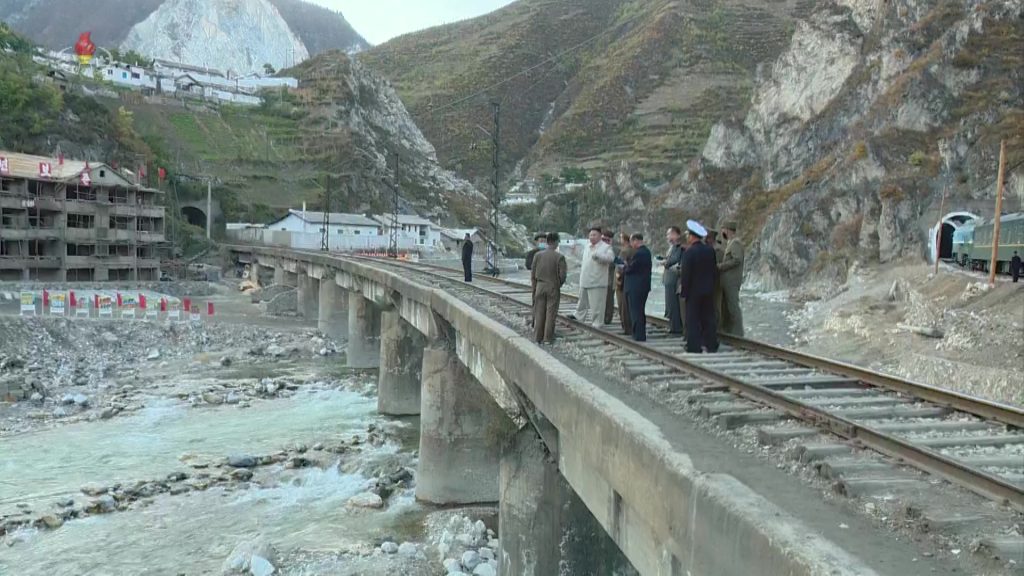
During his visit, Kim said he would “take charge of the project himself” but also laid the entire burden of the project on the Korean People’s Army. The army, he declared, “would take full charge of building materials such as cement, steel and oil and build 5,000 dwelling houses each year from [2021] on a yearly basis, not reaching out for help to the national planning institutions.”
The construction plan was ambitious, only beaten by a pledge at the same congress to build 50,000 apartments in Pyongyang over the same period. It made Komdok the second-largest housing construction project in the country and emphasized the importance of the region.
When Kim Jong Un announced plans for the project at the Eighth Party Congress, he characterized the area as having “centuries-old backwardness.”
Indeed, before construction work began, the Komdok region was typical of most rural areas of the country. It had semi-detached single-story homes with small gardens grouped together into small communities. Depending on the size of the community, sometimes a central hall or school was located alongside the houses.
Figure 5a. Small community in the Ryongyang Mine area before redevelopment. Pleiades © CNES 2024, Distribution Airbus DS. For media options, please contact [email protected].; Figure 5b. Small community in the Ryongyang Mine area after redevelopment. Copyright © 2024 Maxar.
Kim’s plan would turn it into a “model mountainous city.” That mirrors the language used on a couple of other recent projects: the redevelopment of Samjiyon, which Kim said would turn it into a “model of a mountainous cultured city,” and the new Kwangchon Chicken Farm, which would be a “model of the poultry industry.”
Since then, most of the old single-story buildings have been replaced with small to medium-sized multi-story apartment buildings, that likely house a few to a few dozen households.
For example, around the Ryongyang Mine, several hundred single-story dwellings have been replaced by apartment buildings that vary in height with most being between three and 10 stories.
Progress Against the Plan
Construction of new houses began across the Komdok region in 2021 with the razing of existing housing areas. The steep hillsides around the area mean there is only limited space where building construction is feasible, making it necessary for the new buildings to be located where the old housing once stood.
The redevelopment of the area around the main Komdok Mining Complex illustrates the substantial efforts taking place around the region. Before redevelopment, several hundred small homes were packed into a community surrounding the mine and Pukdae River. In March 2022, demolition of the homes began, and within three months, the foundations of new, multi-family dwelling units began appearing.
In some areas, dirt roads have also been paved over to add to the more modern feel of the area.
Figure 6a. Main area of Komdok Mining Complex before redevelopment. Pleiades © CNES 2024, Distribution Airbus DS. For media options, please contact [email protected].; Figure 6b. Main area of Komdok Mining Complex amid redevelopment on imagery from January 10, 2024. Copyright © 2024 Maxar.
The new buildings around Komdok Mine opened in December 2022, making it less than a year from the start of demolition work to the move-in ceremony. This rapid pace is typical of how construction has progressed under the project.
As with most recent North Korean construction initiatives, the speed creates serious questions about the building methods, materials and quality.
The homes look impressive from the outside, especially with the more modern and stylish architecture being employed in recent years, but little is known about the facilities in the buildings, the level of interior finishings, or even the supply of utilities such as electricity or water.
State media has focused heavily on external shots of the new buildings with occasional interior shots, usually of only one or two apartments in any particular building. The apartments appear to have a standard layout with a kitchen, living room and possibly an additional room.
Residents are typically shown receiving their licenses to use the homes (the state retains ownership of the homes and gives residents permission to live there), along with gifts from the Workers’ Party of Korea such as kitchen utensils, an electric fan, an LCD TV and bedding. All homes come with portraits of Kim Il Sung and Kim Jong Il, and TV coverage often shows new residents bowing to the portraits.
Drainage and Flood Management
In our last report on the Komdok region, we highlighted the issue of mountain run-off and drainage in many of the local communities. Due to the topography, communities were built either on patches of flat land alongside the river or on the steep slopes directly adjacent to the river.
Both are at risk of flooding, run-off and landslides during heavy storms and typhoons, as demonstrated by the destruction caused by Typhoon Maysak, which compelled Kim Jong Un to the region in 2020.
The steep terrain in some areas is clear from television images, but what is unclear is the depth and strength of the foundations of the buildings that have been constructed on the steep hillsides and how resistant they may be to erosion or landslides.
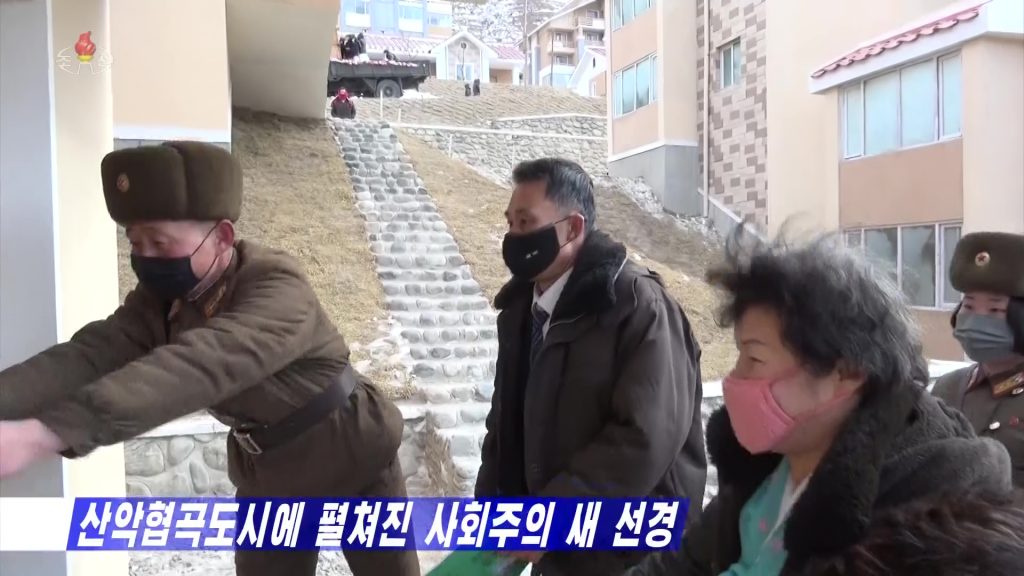
In the new housing areas, the mountain run-off furrows appear to have been reinforced with concrete, although other water management techniques are unclear from satellite imagery. Since the region has not been hit by any major typhoons recently, any improvements to drainage and water management systems are yet to be tested.
Looking Ahead
There are two more years until the end of the current five-year plan. Only 5,000 homes remain to be built to fulfill the Komdok project goals, and given the pace of construction so far, it may be completed ahead of schedule.
According to commercial satellite imagery of the area, there are still several small communities in the mining region where the old single-story homes remain, especially in the northern end of the region around the Taehung Youth Hero Mine. Additionally, in several areas near the mine, the rubble of houses destroyed in the typhoon in 2020 has still not been cleared.
These areas are expected to be included in the next or final construction phase.
Figure 10a. Single-story housing in Komdok area prior to Typhoon Maysak-related flooding visible on imagery from May 7, 2019. Image: Google Earth, annotation by 38 North. For media licensing options, please contact [email protected].; Figure 10b. Remnants of flood-damaged and destroyed housing remain as observed on imagery from November 19, 2023. Image © 2024 Planet Labs, PBC cc-by-nc-sa 4.0. For media licensing options, please contact [email protected].

